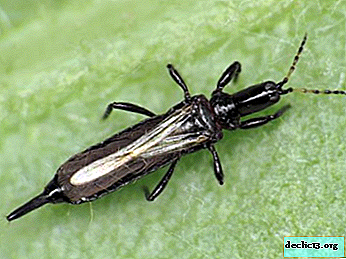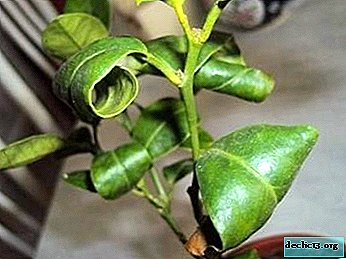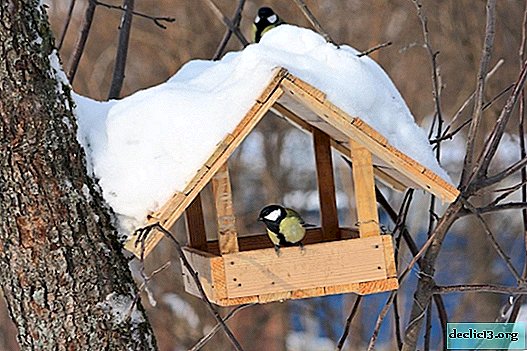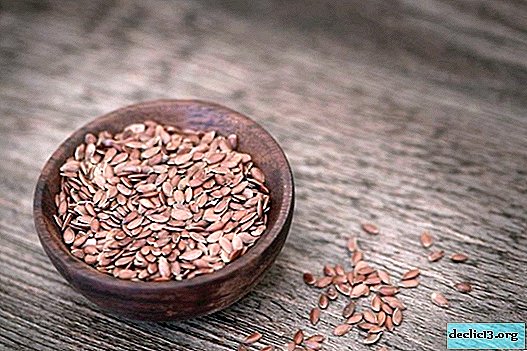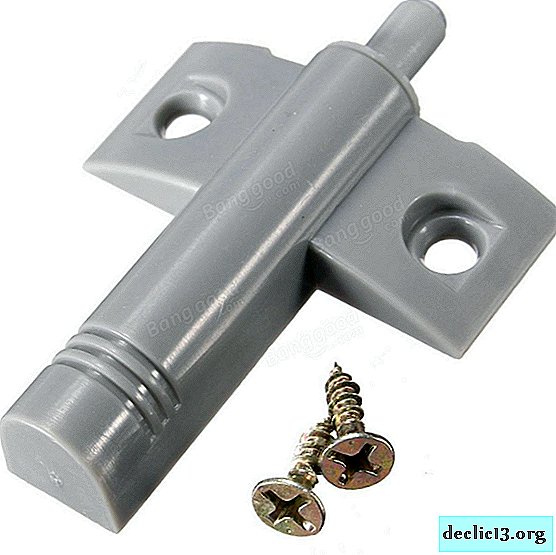A flower of incredible beauty - a peony rose! Photos, grades and care instructions

Peony roses are a popular type of bush roses, which has not yet been included in the world classification as a separate species.
This flower got its name due to the fact that in shape and color it resembles a peony. The flowers are smaller in size, but can boast an abundance of colors.
We will analyze in more detail what it is and how to grow it, and also provide a photo of a bush plant of a peony species.
Appearance and history of occurrence
The bushes are neat in shape, they are covered with dark green leaves. During flowering, beautiful and lush buds are added to them. The peculiarity of the variety is the heady expressed aroma of a rose, which only intensifies in cloudy weather. The height of the bush of peony roses reaches 2 m, the diameter of the buds is 5-12 cm.
The features of this type of roses include:
- cupped shape of buds;
- pronounced aroma;
- rapid growth and rooting;
- unpretentiousness in leaving;
- lack of wild growth;
- resistance to diseases and pests.
What is the difference from the rest of the species?
The peculiarities of peony roses are that they are distinguished by magnificent decorative qualities, as they at the same time resemble an exquisite rose and lush peony. Besides, the plant is not picky about the conditions of cultivation and care.
What colors are there?
At the moment, there are about 200 subspecies of pion-shaped roses.
The color of roses can be:
- pink;
- cream;
- white
- lavender;
- in red;
- maroon;
- bright orange.
Description and photo varieties
Constance Spray

This variety was the very first to be bred and today is in great demand. The flower has large buds of soft pink color. An adult bush, can curl on a support. Lush flowering roses, characterized by the presence of many fragrant buds.
Juliet

This variety has bright saturated double flowers with a pronounced smell. A bush of short stature - 1.5-1.8 m. It is desirable to grow a variety in partial shade.
Pat austin

The variety has bright yellow-orange flowers. They are semi-double type, large in size with a delicate aroma. The variety is characterized by long flowering, which can last all summer.. The plant resists cold and tolerates shading.
Benjamin Britten

The variety has large and double buds, their diameter is 10-12 cm. The color of the flowers is bright raspberry. They emit a delicate and fruity aroma. Bushes of medium height - 1.5 m. The variety resists diseases and tolerates cold well.
Misty Bubble

The buds of this variety have a bright lilac color, the aroma resembles oriental spices. Misty Bubble blooms profusely, and up to 5 peduncles can form on one bush.
Lady charlotte

This is a young variety with a pleasant yellow color. The aroma is also gentle, but saturated, reminiscent of a tea rose. Rose buds are large, terry type. Flowering undulating and long.
Bloom
When and how?
Peony roses are characterized by early flowering. As soon as new shoots are formed, the conditions for a new flowering are created. It comes in July and lasts until October. The buds are large, lush and fragrant.
Care before and after
For the health and good flowering of the bushes, it is important to provide a sufficient amount of sunlight. Water during budding more often - 2-3 times a week. It is necessary to remove wilted buds to prolong flowering.
After flowering, fertilizing is not necessary, as the plant is preparing for wintering.What if this does not happen?
If the peony rose does not bloom, then this happens for the following reasons:
- After planting, little time has passed, and the rose has not yet adapted.
- Wrong place. It should be well lit.
- Bad soil. Dense and heavy earth is not suitable for plants.
- Wrong wintering conditions. A peony rose loves warmth, so you need to prepare for the winter with high quality.
Use in landscape design
 Peony rose is used to create a high hedge.. Shrub varieties of compact size will be an excellent addition to a flower garden or mixborder.
Peony rose is used to create a high hedge.. Shrub varieties of compact size will be an excellent addition to a flower garden or mixborder.
English roses are suitable for planting in groups with stunted shrubs to create a background. Species such as Mortimer Sackler and The Pilgrim participate in the design of pergolas and gazebos.
Also, peony roses can be planted in pots or containers, used for landscaping.
Step-by-step care instructions
Seat selection
The plant grows well and develops not only in a lit placebut also on a shaded area. For active flowering, the sun's rays should illuminate the roses for 3-4 hours a day.
What should be the soil?
For a peony rose, a nutritious and light soil with a neutral pH is suitable.
Landing
For spring planting of rose seedlings, the following recommendations must be observed:
- Maintain planting material in warm water for 6-12 hours. For maximum rooting, you can use a stimulant solution.
- Dig a hole. Its size is selected individually, approximately 0.5 m in diameter.
- At the bottom of the pit lay sand, chernozem and mineral fertilizers.
- Put a seedling in the hole, carefully spread the roots.
- Sprinkle the earth on the roots in several layers, at the same time, ram each time.
- Water the planted plant, lay a layer of mulch, using peat, sawdust.
Temperature
The optimum temperature for rose growth is 23-26 degrees, but it will not tolerate frost anymore, therefore to warm the rose is already at a temperature of -2 degrees.
Watering
Humidification of the soil is performed as the soil dries. It’s best to do it in the evening. On average, 5-10 liters should go on one bush. Waterlogging the earth is not worth it, otherwise it is fraught with decay of the roots.
Top dressing
During active growth, fertilizers with a high nitrogen concentration are applied in the spring. At the stage of bud formation, preparations with phosphorus and calcium are needed.
For each grade, special preparations are used, which must be introduced strictly according to the instructions.Pruning
 It must be carried out early in the spring, before the sap flow begins. In the process of trimming, all damaged, weak or dead shoots are removed. Cropping Features:
It must be carried out early in the spring, before the sap flow begins. In the process of trimming, all damaged, weak or dead shoots are removed. Cropping Features:
- All shoots that are located below the grafting bud should be removed immediately.
- Before and after pruning, each instrument must be disinfected so that the plants do not hurt.
- The first time pruning is carried out after planting peony roses.
- In autumn, shoots need to be shortened so that the bush wintered safely.
- Inspect the plant from time to time to remove all broken and dried branches in time.
- Shrub varieties of roses pruned at the end of the season by ¼ length.
- Shorten the weaving branches by 15 cm.
Transfer
It is necessary to carry out a transplant in the spring, observing the following procedure:
- Prepare a pit for landing. Its depth will be 0.5 m, and the length and width of 50-60 cm.
- The upper fertile soil should not be removed, but the lower one should be removed.
- To the topsoil soil, add in equal amounts humus, compost or peat, as well as sand and superphosphate. The resulting mixture is placed in the landing pit.
- Make a recess so that when the seedling is immersed, its edges are 5 cm lower than the edge of the pit.
- Cover the remaining space in the hole with fertile soil. Water each plant 8-10 liters of water.
- Lay a layer of peat mulch.
Preparation for winter
Peony roses are sensitive to low temperatures, so they need shelter.For wintering, all faded buds are cut from the bushes, the shoots are covered with fallen leaves and sprinkled with earth. A dense layer of hay or straw is laid on top.
How to propagate?
Cuttings
 Cutting is necessary in August. Procedure:
Cutting is necessary in August. Procedure:
- The selected location for planting the cuttings should be in shading. Dig it carefully, add dry manure or crumbly humus.
- Choose the shoots of this year, but already ripe. Use for cuttings need a branch with 3 leaves.
- Remove the two lower leaves, and leave the upper one.
- Carefully water and plant the cuttings with a distance of 15-20 cm.
- Cover the cuttings with a cropped plastic bottle.
- Young plants need to be watered from time to time and left until winter.
- With the onset of winter, sprinkle plastic bottles with snow.
- In the spring, new shoots will appear on the cuttings.
Layering
This method of reproduction is the easiest, as it is suitable for climbing and shrub roses. It must be carried out in July, following the following procedure:
- The area where layering will be created, clean the plants from fertilizer and dig.
- Cut the shoot selected for layering along the bottom, and set a match in the cut.
- Using staples, fasten the cuttings tightly to the soil, lightly sprinkle with soil and pour.
- Tie the end of the shoot to the peg.
Diseases and Pests
Peony roses are resistant to various diseases, but sometimes they may be affected by root rot, powdery mildew, and black spotting.
For treatment and prevention, spraying is performed with special means, as well as with a solution of whey, wood ash and copper sulphate.If the lesion is severe, then directional chemicals are used: Skor, Topaz, Fundazol.
 When a plant is not treatable, it is better to remove it to prevent infection of neighboring specimens.
When a plant is not treatable, it is better to remove it to prevent infection of neighboring specimens.
The following pests affect the peony rose:
- aphid;
- Chafer;
- snails;
- spider mite.
A solution of soda (60 g per 10 l of water), soap (40 g per 10 l of water), manganese will help get rid of pests.
A peony rose is an incredibly beautiful plant that is grown on the street, decorating arbors, creating a hedge or simply decorating a flower bed. In care, the plant is picky, rarely exposed to diseases and is presented in a wide variety of varieties.


